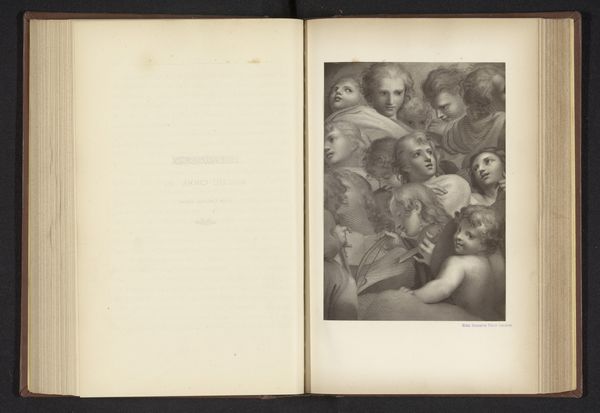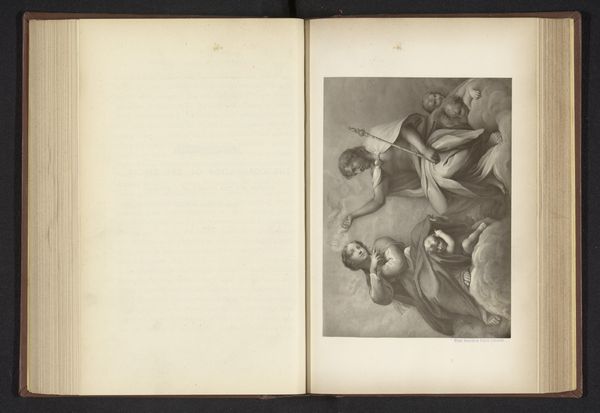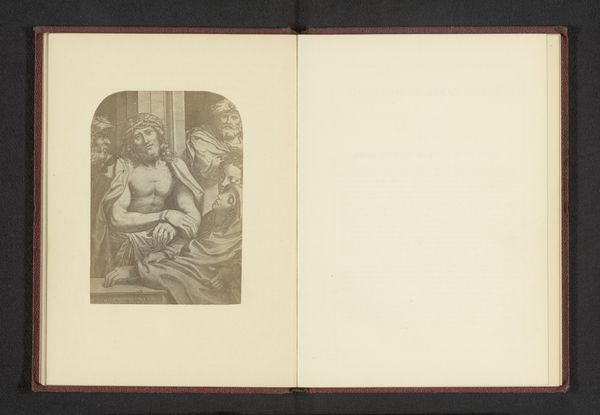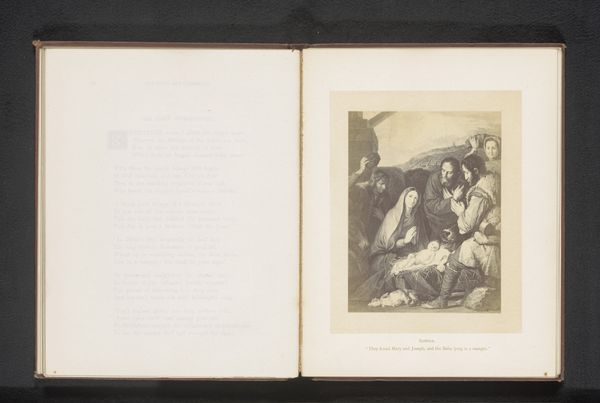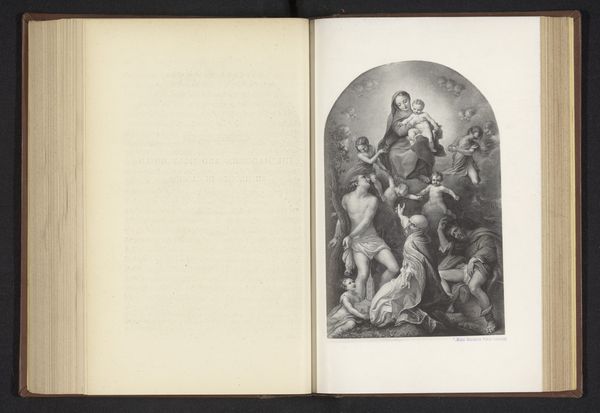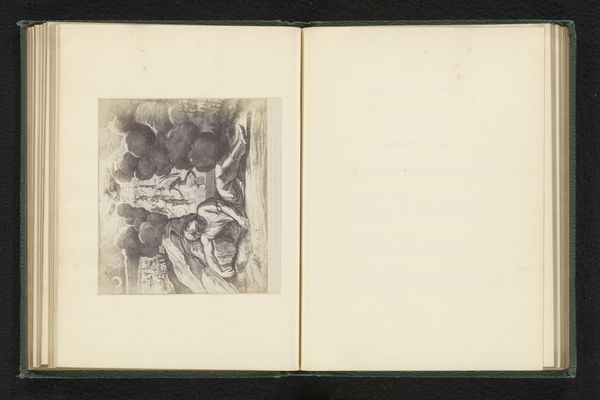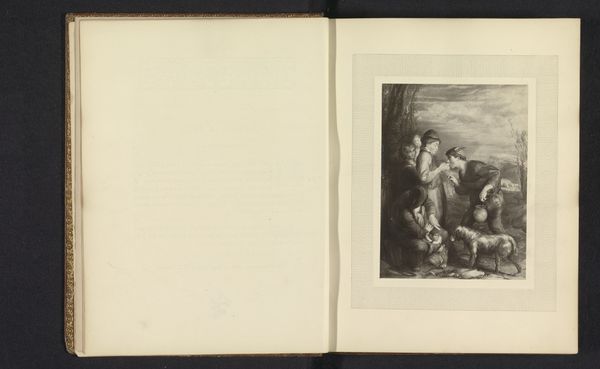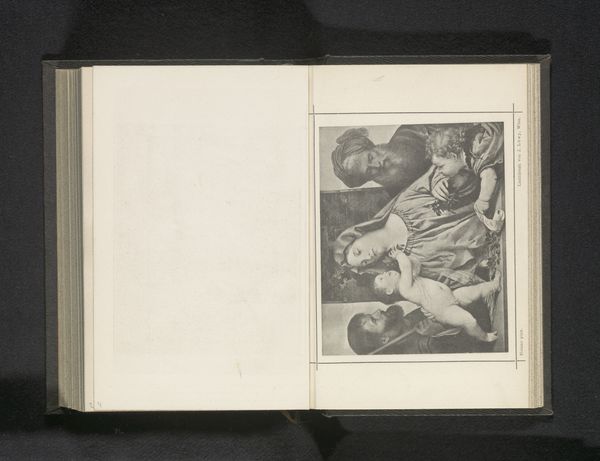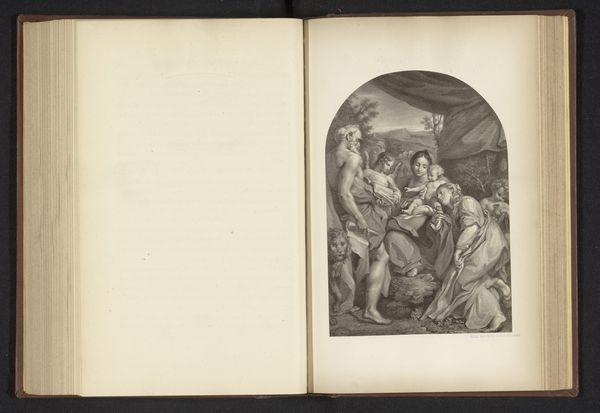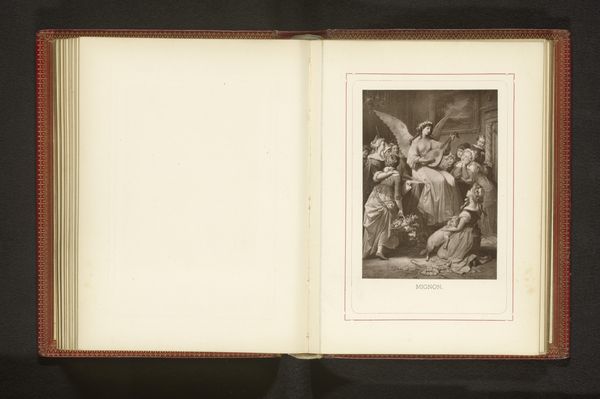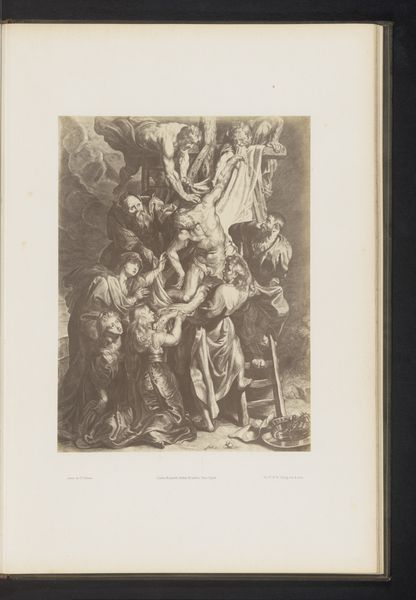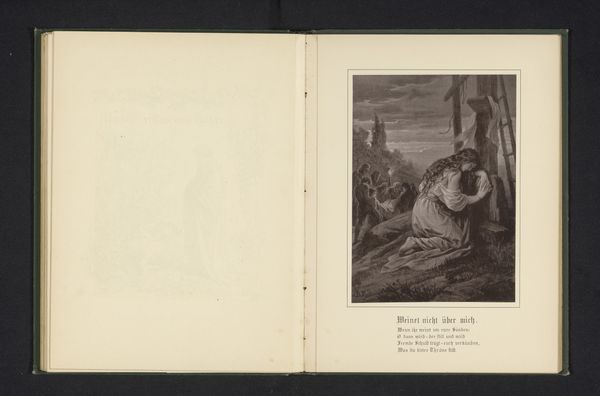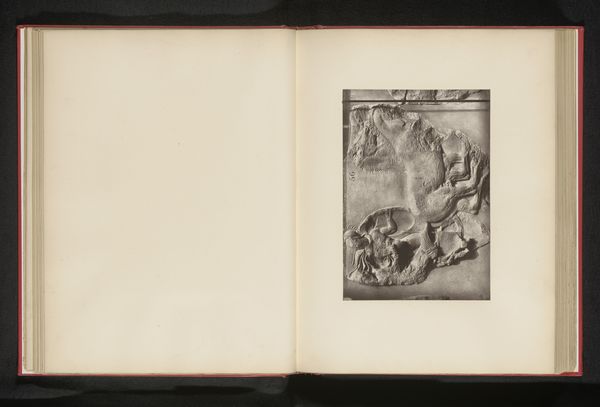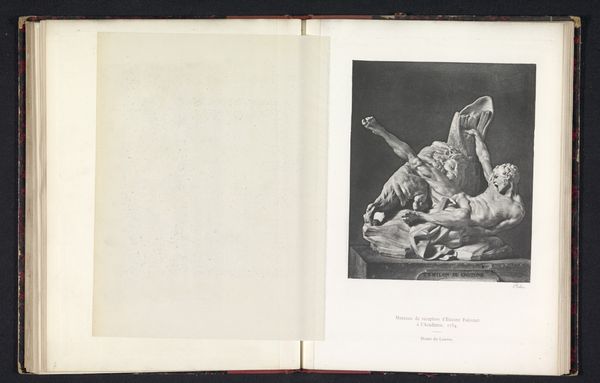
Fotoreproductie van een prent naar een schildering, voorstellende een koor van engelen before 1876
0:00
0:00
drawing, print, paper, photography
#
portrait
#
drawing
#
ink paper printed
# print
#
paper
#
11_renaissance
#
photography
#
group-portraits
Dimensions: height 171 mm, width 128 mm
Copyright: Rijks Museum: Open Domain
Curator: It’s hard not to feel moved by this vintage reproduction. The Rijksmuseum holds this anonymous photograph, "Fotoreproductie van een prent naar een schildering, voorstellende een koor van engelen", placing it before 1876. I find myself drawn to it’s ethereal mood. It reminds me a little bit of peering into a cloud bank and imagining faces. What’s your first impression? Editor: That's a poignant observation. The monochromatic tones indeed create an impressionistic dreamscape, almost forcing us to interpret the faces and forms ourselves. But what strikes me is its almost overwhelming whiteness. Given the religious subject matter, that evokes a potent visual language. Curator: It's true! White is practically a brand in the context of angels. Innocence, purity, heavenly realms. The Renaissance fascination with perspective makes the subjects almost pop from the surface, which can create an incredible depth, almost voyeuristic. It makes me consider how such imagery reinforced the perceived idealization and perhaps even inaccessibility of divinity in the common imagination. Editor: Absolutely. The artistic deployment of innocence becomes politically charged when one examines the historical function of the Church, say, for instance, policing acceptable forms of social conduct and determining questions of morality. Also, consider what other symbols of the original Renaissance paintings were removed to place more importance on skin color. I find it unsettling. Curator: Ah, I hadn't considered it in quite that light, and it's important that we should. Yet, when I view those countless cherubic faces, I'm almost nostalgic. Thinking of how different they must seem viewed through modern eyes versus a 19th century person looking to a bygone Renaissance. Even in its reproducible format and the passage of time, something beautiful still exists there for me. Editor: And perhaps that beauty lies in its complicated status, caught between devotional artwork, historical record, and, let’s be honest, racial project. That the photo opens conversations and encourages us to grapple with its many facets feels powerful. Curator: A beautiful end note on what such seemingly innocuous art can uncover for us.
Comments
No comments
Be the first to comment and join the conversation on the ultimate creative platform.
